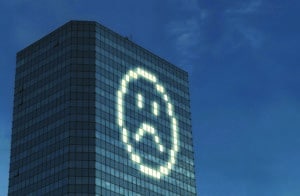Commercial developers group NAIOP said distress in the office market has been concentrated in a small percentage of buildings that are functionally obsolete.
“Until these buildings are retrofitted, repurposed or demolished, a surplus of obsolete space will likely pose a headwind for the broader office market,” the NAIOP Research Foundation said in a second-quarter report.
The U.S. office market will decline through early 2024 before bottoming out and beginning a recovery, the report predicts. Another 24.4 million square feet of negative absorption is expected through the end of 2023, before recovering with 30.6 million of positive absorption in 2024.
The report’s forecast model is based upon projected economic activity, including a 60 percent chance of a recession in the second half of 2023.
NAIOP cited research by brokerage CBRE indicating that 10 percent of office buildings have contributed to 80 percent of the increases in vacancy since early 2020.
Since then, the widespread transition to hybrid work schedules has caused the nationwide vacancy rate to rise to 17.8 percent, the highest level since 1993.
Boston officials are awaiting the findings of a $100,000 study by HR&A Advisors of the feasibility of office-to-residential building conversions in the downtown area. Other cities have already begun offering financial incentives to office landlords for conversions, including 10-year tax abatements by Philadelphia. The city of Calgary has budgeted $153 million toward office-to-housing conversions since an energy industry recession devastated its downtown office market in 2015.









